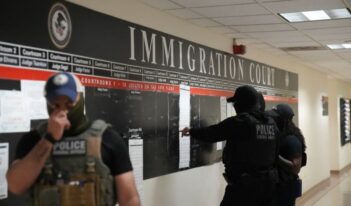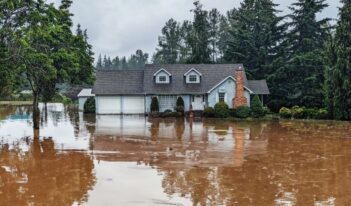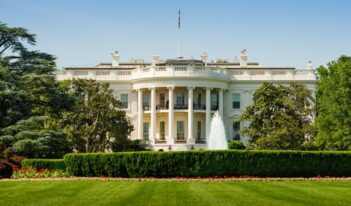
Subnational regulators face a number of significant challenges as they seek to regulate climate change.
In the wake of President Donald J. Trump’s decision to withdraw the United States from the Paris Climate Change Agreement, a coalition of states and cities have committed to implementing the agreement even in the absence of federal involvement.
President Trump argued that the Paris Agreement disadvantaged “the United States to the exclusive benefit of other countries” and would leave American taxpayers to shoulder much of the burden. As a result, President Trump has declared that his Administration would pursue negotiations to create a new climate deal “on terms that are fair to the United States, its businesses, its workers, its people, its taxpayers.” He also decried potential losses in manufacturing jobs, which he said could lead to “further decimation of vital American industries on which countless communities rely.”
But California Governor Jerry Brown (D) declared that the President’s decision was “totally wrong” and that California would “resist” the President’s “misguided and insane course of action.” Los Angeles Mayor Eric Garcetti (D) echoed his state’s governor. He reportedly stated his intent to send a message to the rest of the world that Americans would continue to support the agreement, and declared that “Trump’s move is going to have unintended consequences of us all doing the opposite of what the President wants.” And New York City Mayor Bill de Blasio (D) likewise committed to “honor the goals of the Paris agreement…so our city can remain a home for generations to come.”
In response to the President’s decision to withdraw from the Paris Agreement, Brown and former New York City Mayor Michael Bloomberg launched America’s Pledge, an initiative to “aggregate and quantify the actions of states, cities and businesses” that have pledged to “drive down their greenhouse gas emissions consistent with the goals of the Paris Agreement.” And in June 2017, Bloomberg submitted a declaration to United Nations officials, entitled “We Are Still In,” signaling the intent of many American subnational governments to continue to support the Paris Agreement.
Against this backdrop, this series in The Regulatory Review examines the obstacles faced by states and local governments in their quest to regulate climate change. In their initial essay, professors Cary Coglianese and Shana Starobin draw attention to several legal risks that subnational governments run when they seek to regulate climate change. Coglianese, a professor at the University of Pennsylvania Law School and director of the Penn Program on Regulation, and Starobin, a professor at Bowdoin College, point to the failure of an effort by the government of Albuquerque, New Mexico to impose more energy efficient building codes, which a court blocked after industry successfully challenged the standards as federally preempted.
In response, Craig Segall and David Hults, both attorneys at the California Air Resources Board (CARB) writing in their personal capacities, laud subnational governments’ efforts to regulate climate change. Segall and Hults contend that states like California can create climate policies—promoting everything from renewable energy to more efficient cars—that “can spread” and that doing so will “create the political, legal, and economic pressure for larger change.” But Coglianese and Starobin conclude that, ultimately, Segall and Hults merely advance hopeful “rhetoric extolling the virtues” of subnational regulation and fail to grapple with the significant legal hurdles that subnational governments actually face.
The Regulatory Review is pleased to present this series of essays debating state and local government regulation of climate change.
The Legal Risks of Regulating Climate Change at the Subnational Level
September 18, 2017 | Cary Coglianese and Shana Starobin
In 2005, Martin Chávez won reelection as the mayor of Albuquerque on a platform that included climate action. A task force he established led to negotiations between Chávez and city council-members over a new building code that in 2007 imposed more stringent efficiency standards. But the otherwise notable Albuquerque experiment proved a failure in the end as the result of litigation successfully pursued by industry. The Albuquerque experience offers a vital lesson for today’s subnational leaders and scholars of public administration: success requires more than just meritorious motives; careful legal analysis is needed too.
Leading on Climate at Every Level
February 19, 2018 | Craig Segall and David Hults
The California Air Resources Board, where we work, is pioneering solutions in one of the world’s largest economies, and is doing so in collaboration with many other jurisdictions. We are familiar with the difficulties of subnational regulation that professors Cary Coglianese and Shana Starobin cite. We are also familiar with overcoming these difficulties. Subnationals grow climate change solutions. We seed technological breakthroughs, like zero-emission vehicles, that have begun to spread worldwide. We craft policies that are robust, cost-effective, scalable, and exportable.
Let’s Be Real About State and Local Climate Action
February 20, 2018 | Cary Coglianese and Shana Starobin
Actions by state and local governments, along with voluntary efforts by industry, are all presumably better than nothing. We are thus grateful to Craig Segall and David Hults for extolling the virtues of various state and local climate initiatives. Yet as much as we personally share Segall and Hults’s hopefulness, as scholars we have a duty to do more than just traffic in hope. Optimism can blind decisionmakers and the public to real policy challenges at the state and local level. More troubling still is the possibility of lulling the public into thinking the United States can adequately address climate change without federal action.
Seizing the Moment with Strategic Climate Strategies for Subnationals
February 21, 2018 | Craig Segall and David Hults
The United States needs meaningful federal action—not just subnational action—to address climate change. We agree with professors Cary Coglianese and Shana Starobin that “subnational governments may offer the only meaningful hope for the United States to make significant policy progress.” The remaining question—and perhaps the site of the primary difference between our view and Coglianese and Starobin’s view—is how to wed the federal and subnational efforts. Subnational governments do best when they develop policies that do more than just cut emissions within their borders. Our most influential policies are ones that can spread.
After a Federal Climate Policy Retreat, States Should Proceed With Caution
February 22, 2018 | Cary Coglianese and Shana Starobin
Absent any realistic prospects for federal action on climate change in the near term, state and local policies are the only game in town. State and local climate action poses distinct legal risks that public officials ignore only at their peril. Segall and Hults do not dispute the existence of these legal risks—but in the end, all they really say in response to concerns about legal challenges is that “subnational governments have proven capable of overcoming many such challenges.” But the only way to overcome any of these challenges is to confront them with eyes wide open—and not to get caught up in unhelpful, one-sided rhetoric extolling the virtues of what state and local leaders can do.



